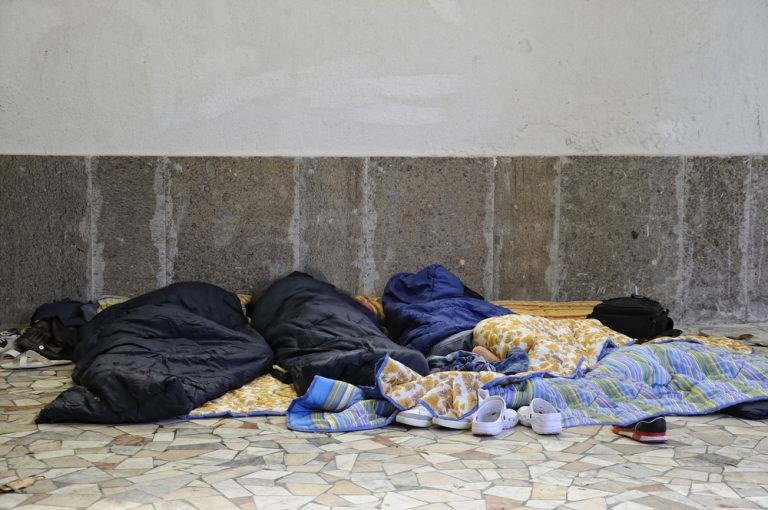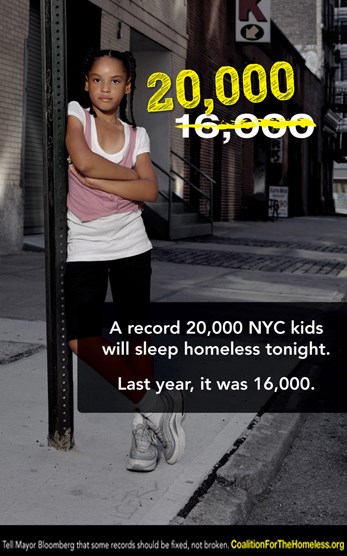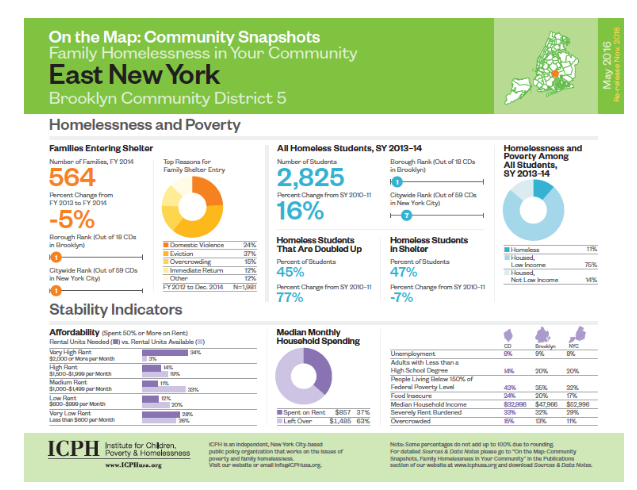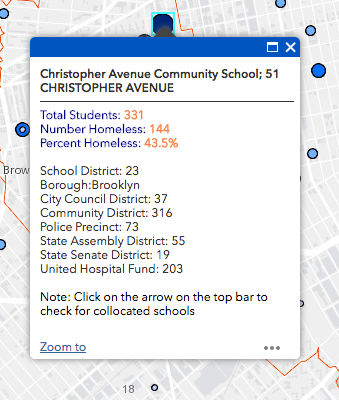
The problem of homelessness in New York City has reached its highest levels since the Great Depression of the 1930s.
According to the Partnership for the Homeless, on any given night, there are 15,000 families and 23,000 children sleeping in temporary shelters. Hannah Hutton, an advocate for ending homelessness who works at The Family Resource Center said, what makes the situation more disturbing is that "34 percent of the people in the shelters have family members who work."

On February 28, Mayor Bill de Blasio delivered a speech entitled,"Turning the Tide on New York City Homelessness" his administration's radical new plan for tackling the problem, a comprehensive plan, including significant policy changes and both programmatic and structural reforms.
"Thirty-four percent of the people in shelters have family members who work," said de Blasio, of how widespread the problem had become, even for the working-class. He admitted he could not see an immediate end to New York City's homelessness crisis, that the vast majority of those living in shelters are not the stereotypical person on the street but families with children.
"The homeless population has changed, but the way we fight homelessness hasn't. It's time to bring new approaches and resources to keep vulnerable New Yorkers in their homes and help those in shelters find new permanent homes," said de Blasio.
"It's taken us three years to realize some of these hard truths," he said. "There was a lot of trial and error."
The plan calls for opening 90 new shelters and for expanding 30 existing shelters-- what he labels "high-quality" shelters that would eliminate the use of hotel rooms and cluster housing by 2023 and would accelerate the creation of new shelters.

However, since laying out his plan, they mayor and his administration's approach have been met with criticism and have sparked heated debates, particularly in Brooklyn, where the problem is most concentrated.
[perfectpullquote align="right" cite="" link="" color="" class="" size=""]"Thirty-four percent of the people in shelters have family members who work," said Mayor de Blasio.[/perfectpullquote]
Here in Brooklyn, for example, according to one of ICPH's recent studies, during FY 2014, there were 2,896 families in the shelter system. In neighborhoods such as Crown Heights, Bushwick, East New York and Flatbush, eviction and the lack of affordable housing were the major culprits.
The same report shows that over 82,000 students attending New York City Public Schools were homeless in School Year (SY) 2014—15. At Christopher Avenue Community School in Brownsville, for example, of its 331 students, 144-- almost half-- were homeless. ICPH published an interactive map on its website detailing the percentage of homeless students in each Brooklyn public school.

For students born in homeless families, homelessness often becomes generational, a circumstance that likely will continue to follow them later in life, said Hutton: "Homeless students fall behind on every level of academic performance," she said. "It has a lifetime impact on students; A lot of homeless students grow up to be homeless adults."
There are rare cases in which homeless students who possess extraordinary talent in a certain subjects or in sports, or who are able to find mentors will rise above their circumstances and even find success. But for those who do not have one or both, they become trapped.
As we will see further along in this series where an East New York mother who works two jobs still finds herself and her three young children in a shelter in the Bronx, the odds of escaping the cycle of homelessness are akin to winning the lottery.
So, what emerging new elements within Brooklyn's poor communities has created so many homeless families at such an accelerated rate and, worse, why does the problem seem intractable?
Stay tuned as we take a further dive into the homelessness problem in Kings County: We will examine the elements of the problem that are unique to Central and East Brooklyn, the pros and cons of the Mayor's new plan; and then we will home in on East New York-- a Brooklyn neighborhood with the greatest number of homeless families, according to the statistics by Institute for Children, Poverty and Homeless.
Finally, we will look at possible solutions for turning the tide in Brooklyn.



